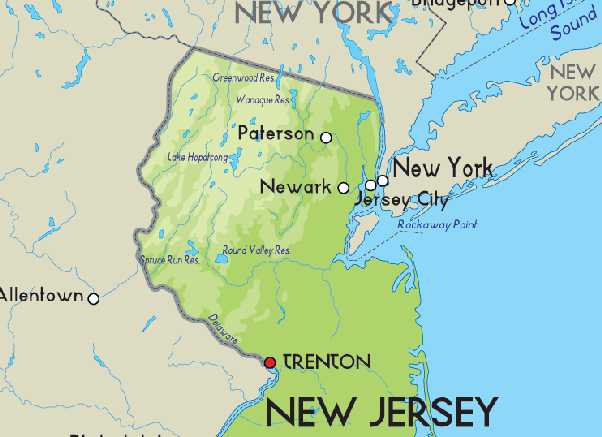At the end of the movie, The Man Who Shot Liberty Valance, a reporter says, “When the legend becomes fact, print the legend.” While that might make great theater, it is an issue for historians. How do you separate legend from fact? Can they be separated? Most historians seek empirical evidence, but this “proof” is not always available. Furthermore, even this type of “evidence” is not always accurate, leaving historians to depend a good deal on circumstantial or preponderance evidence to draw their conclusions.
Staten Island History
Staten Island has its share of legends and folklore, like any other region. Some are easy to dismiss others are not. However, one of the most enduring stories surrounds how Staten Island became part of New York instead of New Jersey.
Mayors and even scholars have repeated the story of a boat race with Staten Island going to the winner. Even the venerable New York Times published stories on March 8, 1903, and again on September 18, 1921, recounting how a British Captain named Billopp saved Staten Island for New York. While a great story, is it true? Leng and Davis had this to say about the legend, “We have found no contemporary record to prove the statement; nor, on the other hand, any other sufficient explanation of the favors so bountifully bestowed upon him.” OK, there is no “empirical evidence,” so let us look at what evidence there is.
The border between New York and New Jersey has been disputed for centuries. However, the latest dispute was settled by the U.S. Supreme Court in 1998.
The Dutch Arrive
When the Dutch sailed into New York harbor, Staten Island was inhabited by the Lenape Indians, a New Jersey-based tribe of the Delaware Indians. In 1630, the Dutch West India Company gave Michael Pauw a patent or land grant for land on the western side of the Hudson River, from Hoboken south, including Staten Island. Around the same time, Pauw also secured a deed from the Indians for Staten Island.
In 1664, the English sailed into New York harbor and took control of New Amsterdam for Great Britain without firing a shot. The King of England, Charles II, gave a patent to his brother James, the Duke of York for land in the new colony – New York.
The Hudson River
The Hudson River would border the British Provinces (New York and New Jersey). However, that did not settle the land claims on the islands that populated the harbor, such as Liberty Island, Ellis Island, and Staten Island. Multiple Indian treaties and conflicting land grants created during the political struggle with the Dutch only added to the confusion, particularly since, historically, Staten Island belonged to the Dutch equivalent of New Jersey.
Why was the Duke of York so eager to settle this dispute? While Staten Island was rich in natural resources, it may have been an effort to control the access to New York’s harbor. If two different provinces held the narrows (New Jersey via Staten Island and New York via Brooklyn), it may lead to disputes and competing taxes/tariffs on goods entering and leaving the port of New York.
To settle the dispute, the Duke decreed that any island in the harbor that could be circumnavigated in 24 hours would belong to New York. Accordingly, the Duke of York contracted Christopher Billopp to circumnavigate Staten Island. As the story goes, Billopp embarked on his ship, the Bentley, and completed the trip in about 23 hours in 1675. One year later, the Duke gave Billopp a large land grant that would reach 1,600 acres. The contributions are documented. Unfortunately, there is no reason stated in the records why such a large grant was given to Billopp.
However, how does one explain why a relatively undistinguished sea captain was given the second largest land grant on record, second only to Governor Dongan’s (5,100 acres); this at the same time that properties on Staten Island ranged from 8-275 acres.
A Line Was Drawn
Without empirical evidence, one can only draw conclusions based on circumstantial evidence: 1. Geographical location of Staten Island. If you draw a line south through the Hudson River, Staten Island lies to the West, and historically, it belonged to “New Jersey” 2. The potential economic benefit of controlling both sides of the harbor, and 3. The unusual size of a land grant to an otherwise obscure and undistinguished sea captain, second in size only to that of the royal Governor the year following the alleged “race.”
In 1923, a New Jersey scholar named James C. Connolly presented a paper before the New Jersey Historical Society entitled How New York Acquired Staten Island. Much of the following information comes from his nine-page report.
I believe the story is true. You can draw your conclusion.

